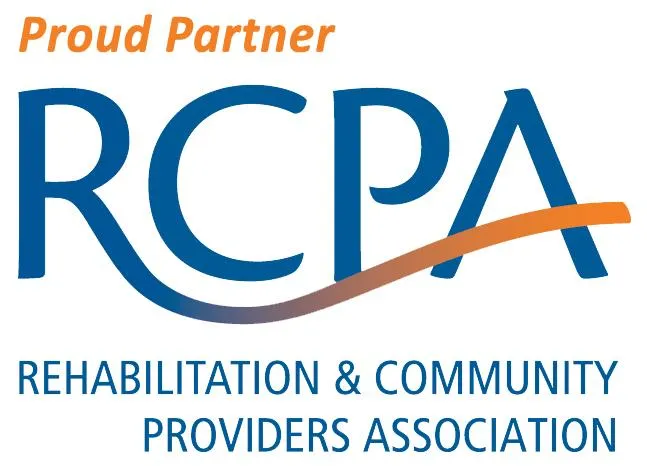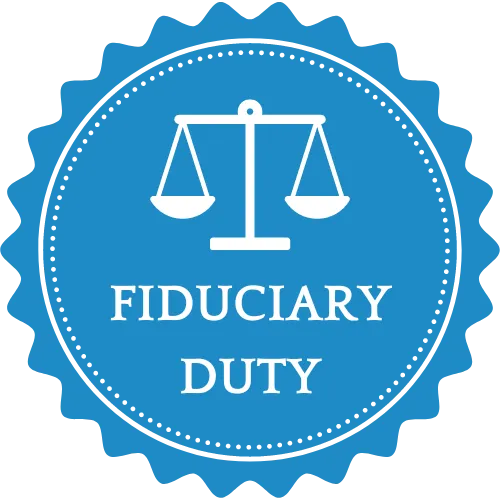Tailored HR Solutions as Unique as Your Business
Expert consulting and service to elevate your HR from a headache to a value driver.
Does Your HR Function Make the Grade?
Take our 5-minute quiz and evaluate the effectiveness of your HR function.

How We Help
We Focus on Your HR Needs,
So You Can Focus on Your Mission.
At Quantum Strategies, we understand that effective human resource management is the cornerstone of every successful business, regardless of size. Our mission is to provide tailored HR solutions that align perfectly with your unique business needs and growth stage.
Our Services
Navigating Change with Confidence: Quantum Expert HR Solutions
From Policy Assistance to Leadership Succession Planning, Quantum Strategies is Your Ultimate HR Resource to Solve Your Business Challenges.
HR Operational
Assessments
Unlock the full potential of your HR department. Our collaborative approach brings clarity and efficiency to your HR operations, providing a thorough analysis of your department's structure, costs, effectiveness, and needs.
Comprehensive Analysis: Detailed evaluation of your organization, workgroups, and individual roles for optimized efficiency.
Objective Insights: Receive a clear blueprint highlighting your HR department's strengths, weaknesses, and gaps.
Strategic Recommendations: Actionable plans focusing on technology utilization, communication enhancement, and leveraging department strengths.
HR Consulting and Managed Services
Tailored to align with your unique needs, our HR consulting and managed services enhance operational efficiency and effectiveness, allowing you to focus on your core mission while we optimize your HR investment.
Expert Supplemental Support: Strengthen your existing HR team with specialized expertise to navigate complex HR landscapes.
Personalized, Agile Solutions: Customized services for organizations with or without HR teams, adaptable to your specific requirements.
Goal-Oriented, Clear Communication: Delivering precise, actionable strategies that align with your organization’s goals and ensure successful execution.
Custom HRIS Design and Integration
Revolutionize your HR data management. Our team will evaluate your current human resources technology stack, offer recommendations, and then integrate your new and existing systems with our cutting-edge technology, ensuring seamless data flow and optimized operational efficiency.
Seamless Integration: Connect legacy systems with modern platforms for streamlined data management.
Tailored Design: Custom HRIS solutions uniquely crafted to meet your specific business needs.
Advanced Analytics: Leverage data-driven insights for strategic decision-making and operational excellence.
“Successfully steering through the specialized HR challenges within organizations of all kinds demands expert understanding, strategic planning, and precise implementation. With comprehensive knowledge of these challenges and the right solutions, your business can stay focused and successful in their vital missions.”
William J. Rizzo

Who we Are.
We Focus on Your HR Needs,
So You Can Focus on Your Mission.
At Quantum Strategies, we recognize that proficient management of human resources is fundamental to the success of any enterprise, irrespective of its scale. Our objective is to deliver customized human resource solutions that are in perfect harmony with your distinct business requirements and developmental phase.
Constant Improvement
Commitment to Customers
High Level Of Knowledge
Best Service You Can Get



Why Choose Us
A True Partner to Solve Your Most Complex HR Challenges.
Empowering HR Innovation and Compliance
Commitment to 100% Client Satisfaction
People-First Approach

Peace of Mind:
Handle ongoing compliance with ease

Employee Satisfaction:
Build a positive workplace with engaged employees

Strategic Confidence:
Drive strategy with advanced analytics

Leadership Development:
Equip your team with the tools to lead

2,245 +
Happy Clients

25 +
Years Of Experience

120 +
Professional Team
Testimonials
The Quantum Commitment - 100% CLIENT SATISFACTION!
At Quantum, we understand that your satisfaction matters most, and The Quantum Commitment is our way of putting that understanding into action. Experience the difference with a team that is dedicated to making your satisfaction the cornerstone of our service. Because when you choose Quantum, you choose excellence, reliability, and a commitment to exceeding your expectations every time.
Our Resources
Unveiling Proven Strategies and Insights.
Discover actionable tips, expert advice, and industry insights to fuel your journey towards success.

Fostering a Psychologically Safe Workspace
As we navigate the complexities of the post-pandemic world, the importance of mental health in the workplace has surged to unprecedented levels. According to research from the
American Psychological Association, 81% of employees are now actively seeking workplaces prioritizing mental well-being.
Key Challenges Faced by Human Resources in Nonprofit Organizations
The nonprofit sector brings its own set of specialized difficulties, especially in the area of human resources (HR). Although these difficulties may share some common ground with those in the for-profit industry, they possess unique characteristics that require special attention from nonprofit leaders.
FOUND THESE HELPFUL?
Explore Additional Articles and Resources In Our Blog

The Power of an Action Plan: Turning Ideas into Results
Introduction
Success doesn't happen by chance; it happens by design. At the heart of every great achievement lies a thoughtful, detailed action plan. Whether you're leading a business, managing a team, or pursuing a personal goal, an action plan template is your blueprint for success. It transforms ambitious ideas into practical, actionable steps, providing clarity, direction, and purpose. A well-crafted action plan doesn't just outline specific tasks; it aligns goals with your vision, defines timelines, and sets the stage for measurable progress. Without it, even the best ideas can falter, leaving resources wasted and opportunities untapped.
An action plan template is the cornerstone of effective project management and strategic thinking. They guide teams through complex challenges, ensuring every member knows their role and responsibilities. By setting a clear roadmap with milestones, deliverables, and resource allocation, leaders can drive focus and efficiency across their organization. This blog explores the key components of action planning, including strategies for defining objectives, managing risks, and maintaining accountability. If you're ready to take your goals from concept to reality, keep reading to learn how to build a business action plan that delivers results.
What is an Action Plan?
Nothing is more important than creating a strong plan. A strong plan is often an indicator of success in many areas of life. A football coach needs a strong game plan to beat an opponent—a military general needs a battle plan to ensure victory against an enemy. A CEO needs a business plan to maximize their business's success. To tackle any goal or challenge, you should start with an action plan.
An action plan is the first step towards any specific project, goal, or campaign and is vital practice in the field of project management. When an action plan is done right, it will show well-defined and visible steps necessary to achieve current work, via company-wide, departmental, or team goals by laying out the milestones, deliverables, resources, budget, and timeline to achieve the target at hand.

"Failing to plan is planning to fail." - Benjamin Franklin, Founding Father
As per the Bureau of Labor Statistics, close to 20% of businesses fail within the first year of operation, and a lot of it happens due to a lack of planning. Having a solid plan is like creating a road from point A to point B. Point A leads to point B and has signs along that road to indicate if the direction is right, how far the destination is, warnings of obstacles ahead, and a constant reminder of how far you have come. Additionally, it needs to have fuel stations and rest stops for it to keep going, and the passengers will vitally play a role in their way to make it easier for each other and work together to reach the target. Planning helps you organize your thoughts, prepare your goals, allocate resources, or mitigate risks in any project.
Developing a Strong Plan
A plan is a form of communication with the stakeholders about what a leader intends to do with their time, resources, and money. Success or failure is pretty much decided at that very moment when the action plan examples are handed to the management. The impression it creates when opening a proposed management plan is significant as it creates a foundation for the mindset in future sections of the action plan template.
Firstly, the aim should be to define the purpose of the project. It is important to know why the project or campaign exists in the first place, and this can be determined by micro and macro analysis. To pick up any emerging trend, competition analysis is necessary to outperform other market players or introduce a new product or create something for a client.
Secondly, it is also imperative to define the value it is going to add to the company. This is a critical factor for the project. The project's value will be the driving factor of access to talent, resources, and budgets, which is the backbone of any project.
Finally, it comes down to the timeline. Any project that stretches for too long will be a strain of budget and resources. Moreover, that will give less time to work on other projects, leading to redundancy and reduced productivity. Having a set timeline is necessary to set a pace for your team to go by.
Vision, Goals, and Tactics
If vision, goals, and tactics are not set for a project, failure is bound to follow, and you can never perform your action plan successfully. To set your vision, goals, and tactics, the first step is to understand the difference between the three.
Your vision should be abstract and always a result of a bigger picture. Your vision will define the general intentions and ambitions of the business and sometimes can be difficult to measure. The leader of an organization needs to establish a vision because it will enable them to look at the larger picture. The employees throughout the organization will need to create their own vision that aligns with the vision of their company and CEO.
Goals are specific steps and actions that get us closer to our vision. They are usually well defined, time-orientated, and narrow in scope, unlike visions. Sometimes you will need multiple goals for one vision, and there are times you might only need one goal for one vision. Goal setting is essential in bringing your vision to life, and it is entirely dependent on your needs.
Tactics are smaller action steps that help us achieve our goals. You will usually have multiple tactics per goal. Tactics are performed more frequently and routinely.
A simple analogy to help you understand these three terms is war. In war, your vision is to win the war. To achieve your vision, you would need to set goals. In this scenario, your goal would be to win battles. The third level would be your tactics. This would cover everything from initial training to commands on the battlefield.
It is important to understand the difference between visions, goals, and tactics. In a later blog, we will go a lot deeper into creating the right vision, goals, and tactics for your needs.
Allocate Resources
Once the purpose is defined and the project objectives are set, it is time to focus on the fuel that runs this ship. This list should include everything that is required to achieve the goals and objectives of the project. A list of necessary resources that project goals could need are:
Budgets: You want to get the maximum value of the money you spend on your budget. Some companies are ready for any amount if it gets them closer to their goal. If there is already a set budget for the department, another skill that will set good leaders apart from great ones is how efficiently they use that allocated budget.
People: The best minds are usually saved for the most crucial projects. Based on purpose, goals, and objectives, the manager needs to attempt to assemble the best team possible. The team members must have relevant skills to the project.
Tools and Software: The right tools and software can help automate and oversee task completion, simplify complex issues, and reduce the burden on the employees
Buildings: Getting a good private space where the whole team is seated together can play a significant role when it comes to collaboration during projects.
Risks & Accountability
Back before the collapse in 2008, the housing market was booming. The government had the admirable goal of incentivizing more homeownership. In typical government fashion, they did not realize that one action affects other actions. They were trying to encourage/force banks to make loans to people who could not afford them. They forced lenders to eliminate the traditional down payment and closing costs requirements. A down payment requirement was not an arbitrary obstacle to preventing more homeownership but a mechanism to reduce the chances of a mortgage default during an economic downturn. During these times, owners with more equity had a better chance to navigate the storm. In situations where the mortgage is worth more than the property itself, they become financially underwater. A homeowner could walk away from the house, and the United States government is required to absorb the loan via the loan guarantee. Add to the fact that investment bankers exponentially made the problem worse by purchasing mortgages and splitting the loans into various tranches, adding additional leverage, and creating synthetic financial products that were resold. This is what caused the financial crisis in late 2007, which led to the Great Recession.
When it comes to strategic planning, over the years and through countless incidents, we need to have contingency plans for what could go wrong, just as we plan for what could go right. No leader should feel like everything will go exactly according to project plans. The financial crisis of 2008 caused a lot of business owners, especially if you were a small business owner, to lose everything due to a lack of strategic plans or preparation. Everyone assumed the housing market would continue to be lucrative, and the value of housing bonds would never lose its value. The housing market crash was an improbable scenario, but it is a fine example of no matter how good the plan, product, service, or industry, risks are always looming and can strike at any moment. If executives at Lehman Brothers, Washington Mutual, Bear Stearns, and many other firms had just kept in mind the risks that can befall an evergreen industry and taken accountability, they could have avoided a great crisis. It will be difficult for the team leader to take all responsibility and oversee every aspect of the project alone. In most cases, when project execution is successful, it is often seen that every team member holds some amount of accountability.
Control
Lastly, the leader needs a way to gauge the productivity of his team members. They can do that by creating control measures. That is because control measures need to be placed to know if the project is going as per the strategic plan, or if the current path the project is on will yield the desired results.
One way to solve this issue is to place KPIs (Key Performance Indicators). A Key Performance Indicator is a tool used to measure values that gauge how effectively a company is achieving its business vision and goals. Organizations use KPIs throughout multiple levels of their business to evaluate their organizational success. Placing relevant KPIs can help team members and managers understand if their efforts are pushing the project in the right direction. We will talk about KPIs much more in-depth in other blogs.
Conclusion
Action plan templates are not just a tool; they are a framework for achieving meaningful and lasting success. By defining a clear vision, setting specific project and personal goals, and allocating resources effectively, leaders can empower their teams to work with focus and determination. Anticipating risks and fostering accountability are equally crucial as they prepare the team to adapt to challenges and ensure sustained progress. With comprehensive action plans, organizations can turn even the most ambitious objectives into tangible outcomes.
An effective action plan doesn't just end with implementation; it relies on ongoing assessment and refinement. Control measures, such as KPIs, help track progress and ensure projects stay on course. By fostering collaboration and maintaining flexibility, leaders can create a culture of resilience and innovation that drives long-term success. No matter the size or complexity of your goals, the right action plan ensures your team has the direction and support they need to succeed. Start building your plan today and transform your vision into reality; because with the right foundation, anything is possible.
Ready to achieve your goals with a customized and strategic action plan? Contact us today for a professional HR assessment to drive results!
Connect
Keep Up with Our Latest News and Insights
Subscribe to Quantum Strategies' latest updates and insights.
Office: Philadelphia, PA | Glen Mills, PA | Washington, DC
Call 610.624.1770
Email: info@QS2500.com
Site: www.QS2500.com






